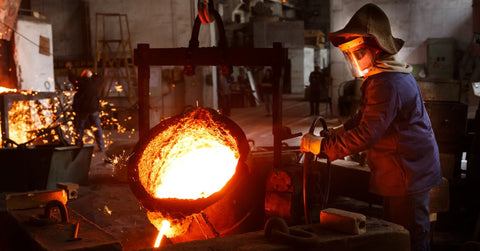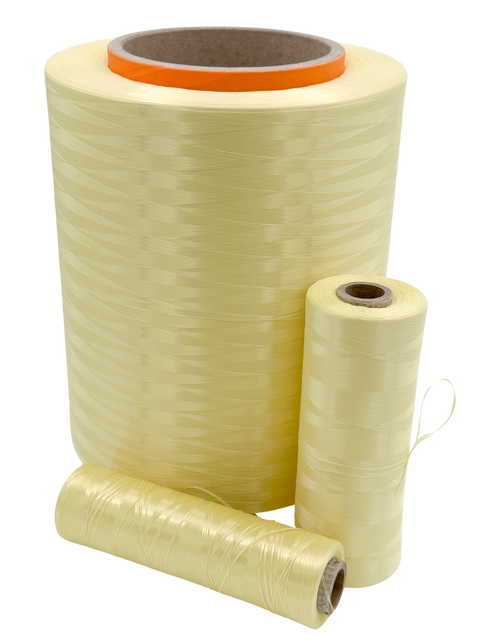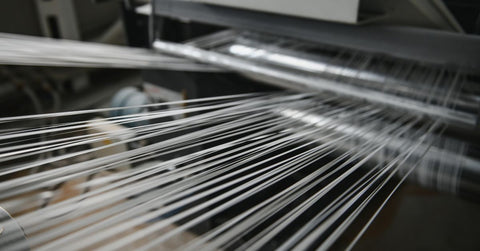A firefighter’s suit, a pilot’s harness, and an oil rig worker’s protective coveralls—what do these pieces of protective gear have in common? Their safety depends on something as small as the thread holding everything together. While metals, composites, and fabrics often take the spotlight in industrial gear design, the stitching quietly determines whether equipment can withstand extreme conditions or fail when it matters most.
That’s why heat-resistant threads are crucial in industrial gear. In industries such as aerospace, military, oil and gas, and even recreation, gear is exposed to high heat, chemical stress, and mechanical wear. If the threads cannot withstand these conditions, safety, reliability, and performance are all at risk.
Let’s examine the role of heat-resistant threads, the properties that make them unique, and their impact across critical industries.
The Role of Thread in Industrial Applications
A thread is what connects pieces of fabric and materials, but it’s also a lifeline for structural integrity in industrial products. It ensures that seams, joints, and protective layers remain intact, even under extreme stress.
Regular consumer-grade threads simply don’t cut it in industrial settings. Imagine a firefighter’s coat exposed to flames or a parachute harness used during an emergency descent. If the thread fails, the consequences could be catastrophic.
Similarly, an oil and gas worker’s protective gear relies on thread that can withstand the dual challenges of heat and chemical exposure while retaining its strength. Each of these scenarios highlights the crucial role that industrial-grade thread plays in protecting lives and equipment.

What Makes Thread Heat-Resistant?
Engineers design heat-resistant threads to perform under extreme thermal conditions without compromising their structural integrity. These high-performance threads have properties that set them apart from their standard counterparts. This is where they owe their resilience:
- High melting points: These threads resist extreme temperatures without melting, breaking, or deforming.
- Chemical resistance: They resist degradation when exposed to harsh chemicals or solvents, which is a common requirement in industrial and technical environments.
- Strength under stress: Despite being exposed to high levels of heat, pressure, and environmental wear, these threads retain their tensile strength and shape.
Common materials used in heat-resistant threads include aramid fibers (such as Kevlar® and Nomex®), PTFE (polytetrafluoroethylene), and fiberglass.
For example, Kevlar® and Nomex® are lightweight yet incredibly strong and excel in thermal and flame resistance. PTFE offers exceptional chemical resistance, while fiberglass stands out for its ability to remain durable in extremely high temperatures. These materials provide solutions tailored to specific industrial needs, leaving no room for standard threads.
Why Heat-Resistant Threads Matter Across Industries
Failure isn’t an option in industries where operations and lives are on the line. Heat-resistant threads keep vital gear strong, safe, and dependable, regardless of environmental demands. Here’s how they make an impact across key sectors.
Aerospace: Precision Under Pressure
The aerospace industry demands flawless reliability. Threads are critical in flight suits, seat harnesses, cargo restraints, and cabin interiors. These components must withstand rapid temperature fluctuations, exposure to flames, and constant friction.
For instance, a single failed seam in a seatbelt could compromise passenger safety. Heat-resistant threads ensure that every element performs under pressure to maintain functionality and safety in midair.
Military & Defense: Gear That Protects Lives
Military operations expose gear to some of the harshest conditions, including blasts, prolonged heat, and excessive wear. From body armor to uniforms and tactical gear, heat-resistant threads ensure that equipment holds up when it matters most. This reliability protects soldiers in life-threatening situations, even amid firefights or explosive environments.
Oil & Gas: Reliability in Extreme Environments
Heat, flames, and harsh chemicals are daily challenges in the oil and gas industry. Flame-resistant coveralls, drilling equipment, and insulation on pipelines all rely on industrial-grade threads to stay functional and safe.
For example, when coverall stitching can withstand exposure to heat and chemical spills, it secures an oil rig worker’s safety and reduces operational disruptions. Threads that cannot meet these demands risk major safety hazards and costly downtime.
Sporting Goods & Recreation: Safety Meets Performance
For racing suits, outdoor gear, or high-friction climbing harnesses, safety and durability remain priorities. Heat-resistant threads safeguard users of these products by increasing resistance to flames and wear. Whether it’s in high-speed races or rugged outdoor expeditions, these threads help products stay functional and safe under intense conditions.

The Consequences of Using Non-Heat-Resistant Threads
Cutting corners by using standard threads in high-stress environments can have dire repercussions. Gear failure could lead to safety hazards, costly production downtimes, or the need for premature replacements. Whether you’re outfitting a spacecraft or stitching a high-performance racing suit, reliable threads are essential for both safety and efficiency.
The Long-Term Benefits of Using Heat-Resistant Threads
Investing in heat-resistant threads offers a range of long-term benefits that far outweigh any initial costs. Here’s how these threads provide value:
- When threads hold up under pressure, they protect both workers and end users in critical scenarios.
- Industrial gear lasts longer when its seams, stitching, and reinforcements resist failure. This reduces the frequency and cost of replacements.
- Most industries require safety certifications and standards. Heat-resistant threads make it easier to meet these demanding requirements.
- By using high-performance threads tailored to demanding conditions, you ensure top-tier functionality and reliability.
Choosing the Right Thread for the Job
Different threads hold different properties and strengths. Selecting the right one depends on the application. Consider factors such as these:
- Temperature: What extremes of heat will the equipment encounter?
- Environment: Will the thread face chemical exposure, UV rays, or abrasion?
- Application requirements: What level of tensile strength or flexibility is necessary?
One size does not fit all, and working with an experienced partner like Rocket-Fibers can help you find the best solution for your needs. The right choice ensures seamless product functionality while minimizing risks.
When the success of your operations relies on people’s lives and safety, thread is no minor detail. Heat-resistant threads are crucial in industrial gear because they outperform standard threads in protecting workers, maintaining product integrity, and ensuring compliance with industry standards.
If your equipment faces harsh environments, using the right thread is mission-critical. You deserve a partner with the expertise to guide you toward the best solution. Reach out to Rocket-Fibers for assistance in selecting the right high-performance thread. Whether you’re working with aerospace cabins, oil rigs, or military operations, we’ll help you make choices that ensure your equipment performs reliably when it matters most.



